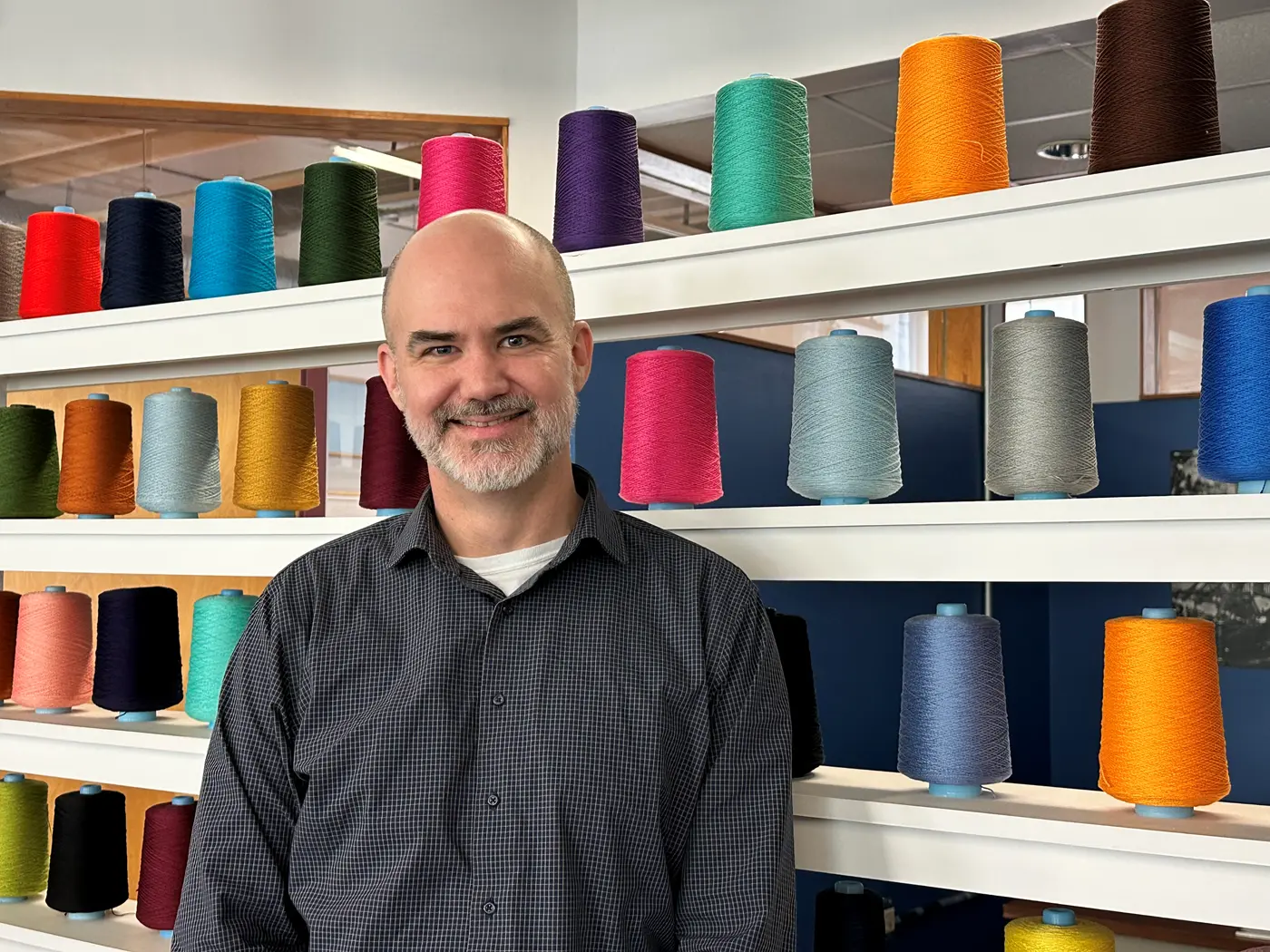 Image by K. Webster
Image by K. Webster
Paul Kuttner, the new director of the Tsongas Industrial History Center, in the Bale to Bolt weaving classroom.
As a college student, Massachusetts native Paul Kuttner studied social sciences, with a focus on economic development in Latin America. For fun, he got involved in theater as an actor and director.
His studies in Chile and Nicaragua, his post-college work with youth in Chicago as a theater and creative writing educator, his desire to understand how underserved communities and schools could work together to improve education and his work on fostering partnerships between universities and communities all led him to UMass Lowell.
Now, Kuttner is the new director of the Tsongas Industrial History Center, the longtime educational partnership between the university’s School of Education and Lowell National Historical Park. He is also leading the development of a new Center for Educational Partnerships for the College of Fine Arts, Humanities and Social Sciences (FAHSS).
“I never started out planning to do what I do now,” says Kuttner, 46.
After working as a theater and creative writing educator in Chicago, “a huge town for community organizing,” he returned to Massachusetts to earn a doctorate at the Harvard Graduate School of Education because he wanted to understand how strong partnerships between communities and schools could transform pre-K-to-12 education.
After graduation, Kuttner moved into higher education, spending eight years at University Neighborhood Partners, which supports collaborations between University of Utah faculty and groups on the historically marginalized, multicultural and multilingual west side of Salt Lake City, with the goal of improving health, education, the environment and more.
Next, he and his family returned to the East Coast, where he spent two years working remotely as director of partnerships for Community-Campus Partnerships for Health, a public health nonprofit that connects scholars with local communities for community-based participatory research. There, he managed federal grants and honed his evaluation skills.
Kuttner continues to study and write about community engagement and partnerships, and he recently started an independent podcast, “Partnership Work: The Art and Science of Bringing People Together.” Earlier this month, he sat down for a conversation about how his background connects to his new roles.
What is the thread that runs through all your varied experiences?
There is a very broad understanding that health care and education and economics and the arts are all connected. My ultimate goal is to bring people together to address challenges that we’re all facing. You cannot do that effectively without understanding the place and the culture that you’re in.
How does arts education come in, specifically?
In Chicago, I started getting interested in how the arts connected with community organizing. Then in graduate school, working with my mentors, we were partnering with community organizing groups around the country to do research.
I was learning about family engagement in schools and I was learning about community-engaged research, but I kept bringing the arts back in. I did my doctoral research on an organization that used hip-hop and theater to promote youth civic engagement.
So you’re not a licensed teacher?
No. I came from community education. I did not work for the public schools at any point, but I worked as a visiting “informal” educator in some schools. And many of my partnerships in Utah involved connecting schools and families to improve education.
What drew you to this job?
I feel very lucky to be here. There are a lot of similarities and differences from my past work. For one thing, there’s a unique relationship with the national park; it’s a very long-running, deep partnership. At the same time, the focus on experiential and out-of-school, co-curricular learning at the Tsongas Industrial History Center is a really valuable one and fits with my background.
And it’s place-based work. Education builds on the families and communities of young people. That’s why it’s important to understand the place you’re in, the people, the culture and the history that you’re rooted in.
There’s science here, and history, and also the stories of immigration that continue to impact our city. We have to hold onto that. We don’t want to lose the strengths or ignore the problems of the past. The Tsongas Industrial History Center carries the torch of local history and culture so well, processes it and passes it on to young people and teachers.
I’m hoping that we can expand on that, perhaps by creating more programs for high school students.
What’s the idea behind the new Center for Educational Partnerships?
First, working with Associate Dean Stacy Szczesiul, I’m going to begin mapping all of the existing educational partnerships between faculty in the College of Fine Arts, Humanities and Social Sciences and communities that involve pre-K through community college education – not just in schools.
That will include everything from long-established extracurricular programs like COOL Science and the UML String Project to the newer Grow Your Own Teachers collaboration with local high schools and Middlesex Community College, and UPRISE, a summer program for high school students, as well as new and existing faculty research.
We will spend the next year building an infrastructure with the folks who are doing the work to support them, where needed. Then we will look at whether some of these projects could benefit by collaborating. Can we go for grants together? Can we learn from each other? What is the community working on, and how can we help? The idea is to become a hub for this network of partnerships.



